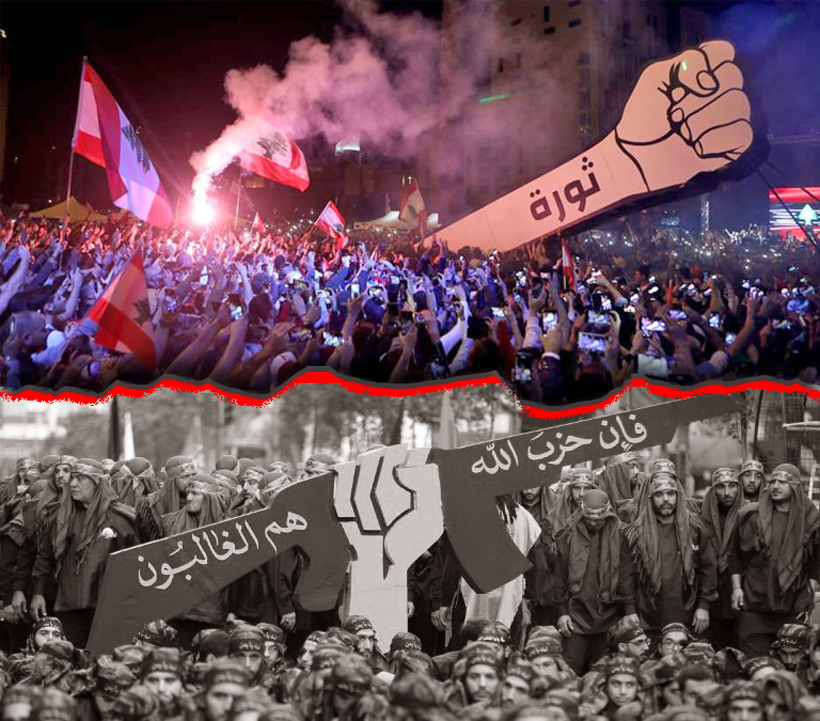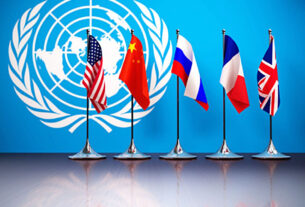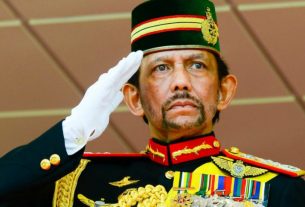Thu 16 January 2020:
The clash between the ‘resistance’ and ‘revolutionary’ movements will define the Middle East in the future.
The events surrounding the US assassination of Iranian Quds Force leader Major General Qassem Soleimani brought to the surface the two main ideological forces that now battle each other across the Middle East – the anti-imperial “resistance” of Iran and its Arab allies, and the freedom “revolution” of domestic protesters in the same lands.
The first was reflected in the massive funeral processions in Arab and Iranian cities for Soleimani and his colleagues that were far bigger than the usual state-organised propaganda protests. Such outpourings of grief and anger in Iran, Iraq, Lebanon and pockets elsewhere signify the central political dynamic – “resistance” in their view – which drives Iran and its allies, and shapes many regional developments.
After a brief pause – from the shock of the assassinations, respect for the dead, widespread anti-American anger, fear of wider conflict, much rain, and Tehran’s admission of its error in downing the Ukrainian civilian airliner – the second key regional dynamic reared its head again: popular demonstrations for freedom and democratic pluralism resumed across the same lands (Iran, Iraq, Lebanon), where large crowds wept for Soleimani and vowed to stand up to the US and its allies.
These two forces now battle to define the identity and policies of the Middle East for decades to come. “Resistance” (moqawama) is how many Arabs and Iranians fight back against the US, Israel and their conservative Arab allies like Saudi Arabia and the UAE. “Revolution” (thawra) for democratic freedoms, social justice, and pluralism that exploded in Arab countries and Iran since the 2010-11 uprisings is how determined ordinary citizens seek to remove the autocratic, incompetent or corrupt governments they blame for their deteriorating living conditions and denied rights.
The two forces had coexisted in separate spheres for years, but they now openly clash head-on in Iran, Iraq, Syria and in Lebanon, as “resistance” troops try to beat down “revolutionary” protests by force.
“Resistance”, the oldest of the two forces, since the 1980s has defined the policies of Iran and its Arab strategic partners, notably Hezbollah, Hamas, Syria, Ansarullah (Houthis), People’s Mobilisation Forces (PMFs) in Iraq and Syria, and other smaller groups. Nonviolent mainstream Islamists like the Muslim Brotherhood also “resist” Western and Israeli political and cultural threats to Arab-Islamic societies, as do nationalist and progressive groups across the region that share this wide tent.
Since soon after the 1979 Islamic revolution, Iran has defined and implemented the core resistance strategy by building political and technical military capabilities among its Arab allies. This allows it to conduct operations throughout the Middle East via its Arab partners and allies, who pester, fight or deter their common foes in neighbouring lands, before the battle reaches Iran itself.
They all use Iran’s asymmetrical warfare toolkit – including missiles, cyber capabilities, attack drones and communications/surveillance systems – to confront Israel (Hamas and Hezbollah) or conservative Arabs like Saudi Arabia and the UAE (the Houthis). General Soleimani’s main mission was to develop this network of Iran’s Arab allies.
Arab critics, however, see this as Tehran’s hegemonic export of its Islamic revolution in order to weave a web of capable puppets under its control. Soleimani was able to foster so many Arab allies because many Syrians, Lebanese, Iraqis, Yemenis and Palestinians had suffered badly from American, Israeli and conservative Arab policies of war and occupation; they were so weak and vulnerable that they willingly joined the Iranian-led, Islamist-driven movement as a self-preservation move.
The self-proclaimed “resistance axis” ethos is to defy foreign threats and refuse to bow to American and Israeli demands, even at the cost of war or debilitating sanctions. Yet, Iran’s nuclear deal with the US, UK, Germany, France, China and Russia, and Hezbollah’s indirect agreements and ceasefires with Israel show the resistance powers’ willingness to engage their foes politically, but only based on equal respect for the rights of all sides.
Historians will determine whether “resistance” has been a heroic anti-imperial success or a naive fantasy. Its advocates say it evicted Israel from South Lebanon and Gaza, achieved strategic deterrence between Hezbollah and Israel, compelled the United States and its partners to agree to the nuclear deal, allowed Iran to survive severe sanctions, saved the Assad government in Syria, beat back the ISIL threat, and now may be pushing the US out of Iraq.
Critics say these gains have come at a brutal cost to Arabs and Iranians, leaving entire countries in economic and environmental collapse, in top-heavy autocracies that constrain liberties and human rights, and brutalise those who protest peacefully. Some also fear that the resistance culture promises them only a future of perpetual warfare and economic distress.
The “revolutionary” protests underway have rocked the region in the past decade. They have been led by a young generation which has borne the brunt of economic mismanagement and the increasing authoritarianism of what they see as a corrupt political elite more concerned with self-enrichment than the wellbeing of its people. This generation has decided to rebel against regimes they view as largely illegitimate and propped up by outside forces, which due to their incompetence are unable to provide for the basic needs of their citizens.
Millions have taken to the streets, defying violent crackdowns, and demanding reforms or total changes in governing systems. Arab and Iranian protesters want to have a say in government policies to protect civil rights and pursue social justice, and to end the existing crony capitalist systems that have ravaged the middle class and spawned large-scale poverty and marginalisation.
In doing so, some of these protest movements have come head-to-head with regimes supported by the US, Israel and its conservative Arab allies and others with regimes backed by Iran and its proxies. In the first case, they have been slandered as Islamists and extremists; in the second as US and Israeli collaborators.
But many revolutionary protesters have been explicit about their opposition not only against inept and unjust rule at home, but also foreign interference from both the US and Iran. This sentiment was captured in a statement released on January 11 by protesting Iranian students at Amir Kabir (Polytechnic) University in Tehran, which said: “The only way out of our current predicament is the simultaneous rejection of both domestic despotism and imperial arrogance. We need a politics that doesn’t merely claim security, freedom, and equality for a select group or class, but that understands these rights as inalienable and for all people.”
As the full universe of “resistance” unfurls at this historic moment across the Middle East, the banner that Islamists and Arab nationalists had claimed exclusively for their battle against American, Israeli and conservative Arab threats has now been joined by a homegrown domestic “resistance” by Arab and Iranian citizens who confront their own governments and demand freedom, equality and dignity.
Arab and Iranian ruling elites and their own citizens now openly fight and resist each other, seeking to define their countries’ identities and policies. This is probably the most consequential ideological battle in the Middle East since its state system was established a century ago.
The views expressed in this article are the author’s own and do not necessarily reflect Al Jazeera’s editorial stance.
The statements, views and opinions expressed in this column are solely those of the author and do not necessarily represent those of Independent Press.
Think your friends would be interested? Share this story!






